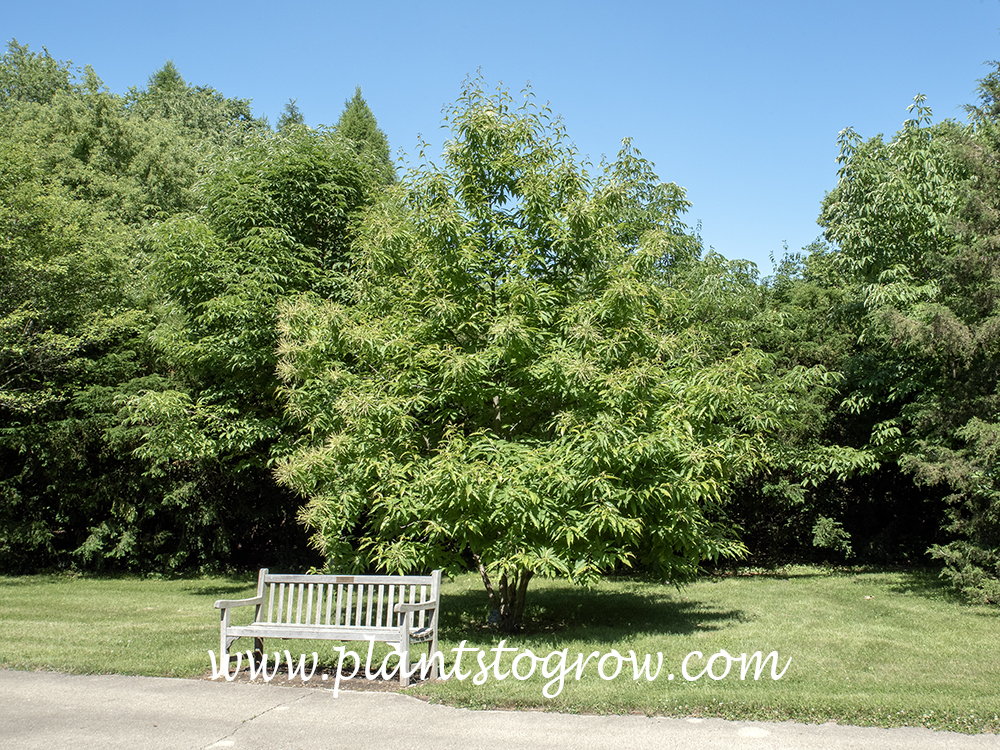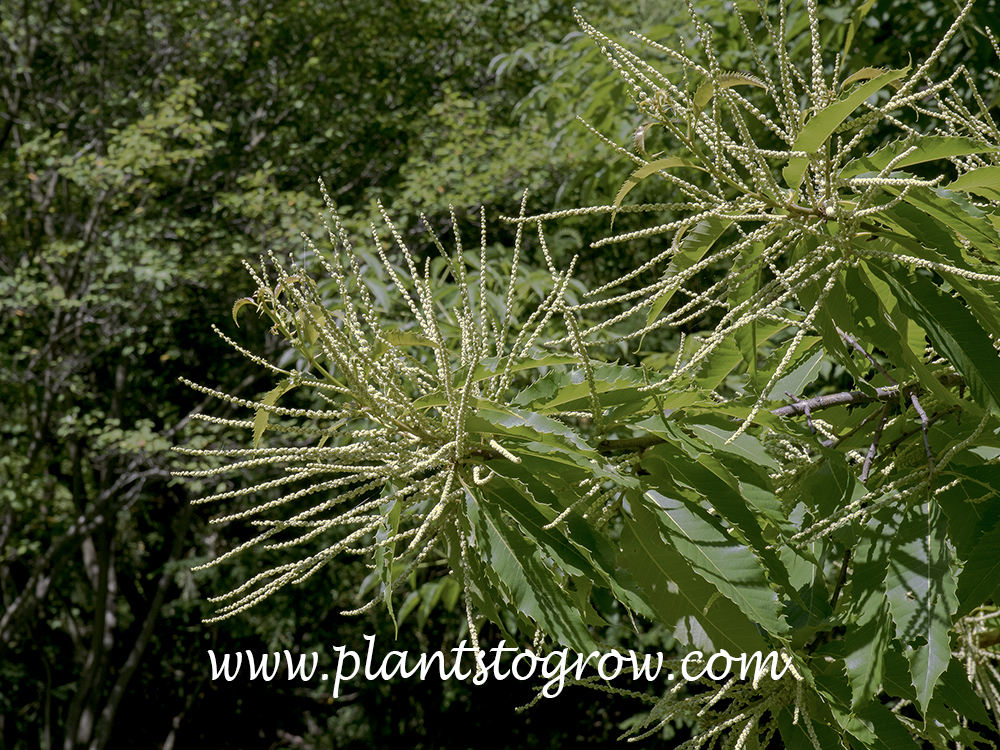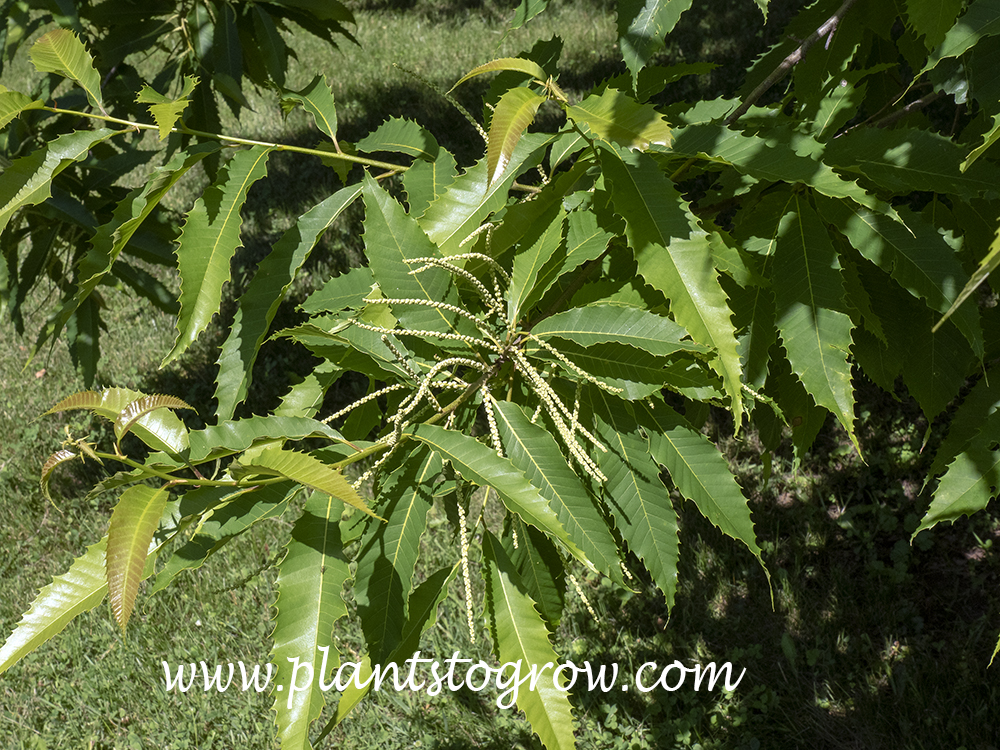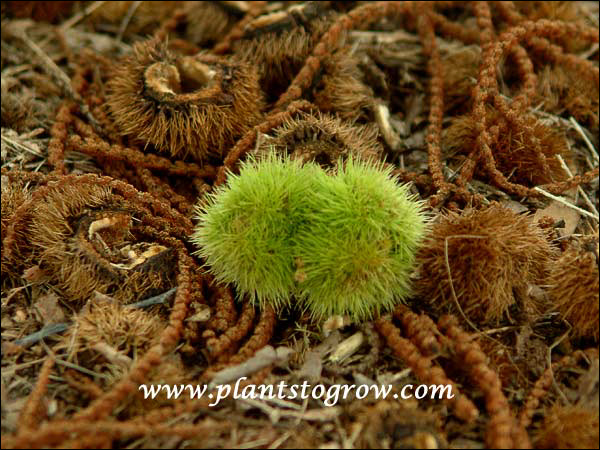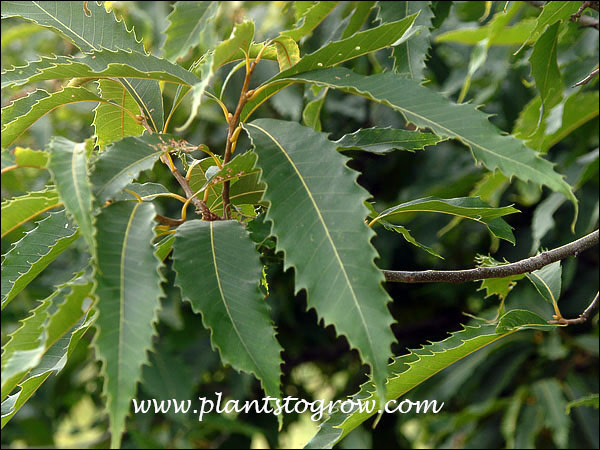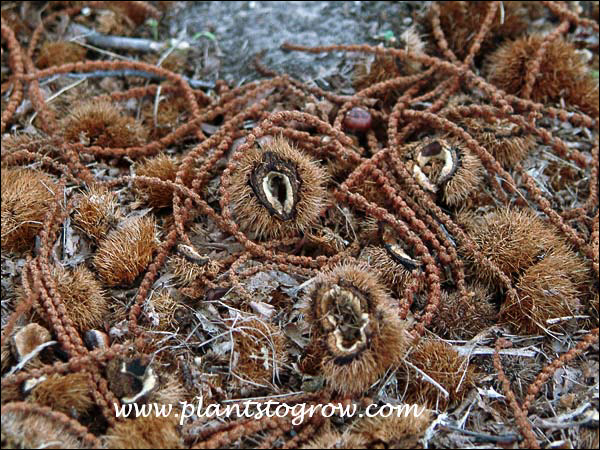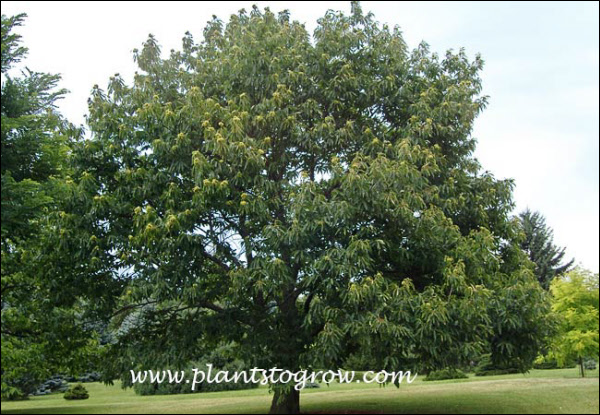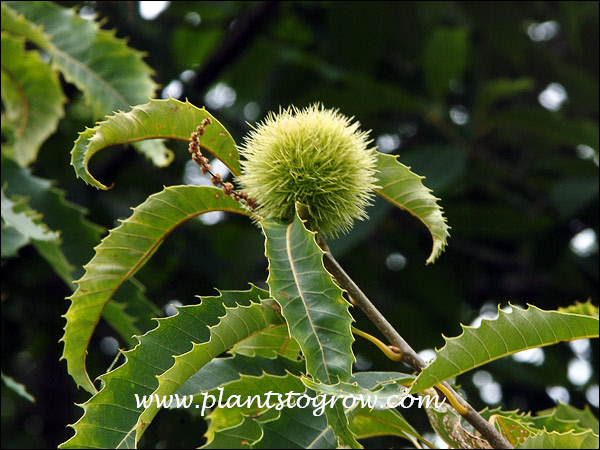| Description | American Chestnut (Castanea dentata) was one time Queen of the eastern American forrest was almost completely wiped out by a blight starting in 1904. |
|---|---|
| Pronunciation | (kas-TA-nee-a)(den-TA-tah) |
| Plant Type | All Plants, Trees Deciduous |
| Hardiness Zone | 4 |
| Sunlight | full |
| Moisture | average |
| Soil & Site | average |
| Flowers | trees are monoecious, having catkins made up of many small, pale green to nearly white, male flowers in 6 to 8 inch long catkins. The female parts are found near base of the catkins (near twig) appearing in late spring to early summer. |
| Fruit | Two to three nuts per fruit encased in a spiny fruit. Reported to be the best tasting of the Chestnuts. |
| Leaves | alternate, simple, oblong-lanceolate, with sharp pointed serrations |
| Dimensions | up to 100 feet, normally in the 20-25 foot range |
| Propagation | seeds |
| Misc Facts | The Chestnut blight arrived in New York on some Japanese Chestnut stock. First reported on American Chestnut trees in 1904 at the Bronx Zoological Park. Within 50 years over 3.5 billion tress died from the blight. (syn. C. americana) |
| Author's Notes | The American Chestnut (Castanea) is not closely related to the Horse Chest (Aesculus). They are different genus and families. Many years ago a neighbor of mine was growing Chestnuts from seeds collected from resistant trees. This was an effort to find some resistant varieties. |
| Notes & Reference | #01-Manual of Woody Landscape Plants (Michael Dirr), #39-The Natural History of Trees (Donald Cultrose Pattie), #75-Encyclopedia of Nuts, Berries and Seeds (John Heinerman), #93-North American Landscape Trees (Arthur Lee Jacobson) |

Cart
